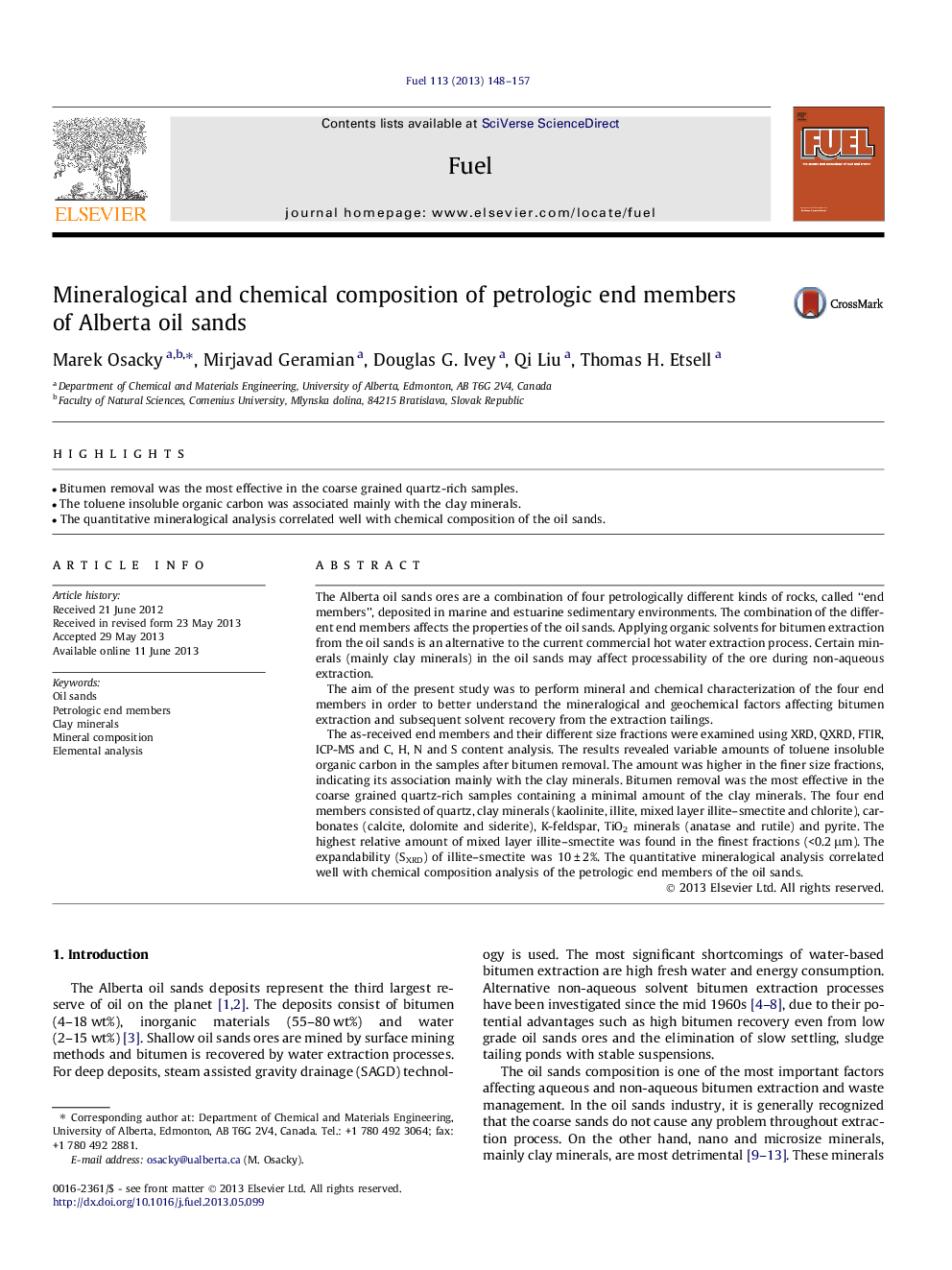| Article ID | Journal | Published Year | Pages | File Type |
|---|---|---|---|---|
| 6639766 | Fuel | 2013 | 10 Pages |
Abstract
The as-received end members and their different size fractions were examined using XRD, QXRD, FTIR, ICP-MS and C, H, N and S content analysis. The results revealed variable amounts of toluene insoluble organic carbon in the samples after bitumen removal. The amount was higher in the finer size fractions, indicating its association mainly with the clay minerals. Bitumen removal was the most effective in the coarse grained quartz-rich samples containing a minimal amount of the clay minerals. The four end members consisted of quartz, clay minerals (kaolinite, illite, mixed layer illite-smectite and chlorite), carbonates (calcite, dolomite and siderite), K-feldspar, TiO2 minerals (anatase and rutile) and pyrite. The highest relative amount of mixed layer illite-smectite was found in the finest fractions (<0.2 μm). The expandability (SXRD) of illite-smectite was 10 ± 2%. The quantitative mineralogical analysis correlated well with chemical composition analysis of the petrologic end members of the oil sands.
Related Topics
Physical Sciences and Engineering
Chemical Engineering
Chemical Engineering (General)
Authors
Marek Osacky, Mirjavad Geramian, Douglas G. Ivey, Qi Liu, Thomas H. Etsell,
